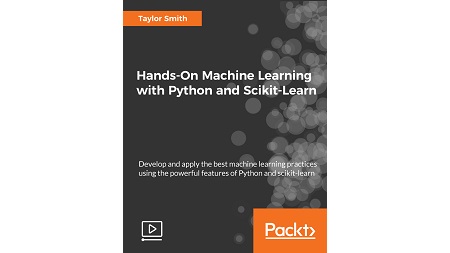
English | MP4 | AVC 1920×1080 | AAC 48KHz 2ch | 2h 39m | 624 MB
Understand and implement the best Machine Learning practices with the help of powerful features of Python and scikit-learn
Machine learning and artificial intelligence are the new big data—at least as far as buzzwords in the workplace go. The scikit-learn library is one of the most popular platforms for everyday Machine Learning and data science because it is built upon Python, a fully featured programming language. This course will help you discover the magical black box that is Machine Learning by teaching a practical approach to modeling using Python along with the Scikit-Learn library.
We begin our journey by observing the end result of a Machine Learning deployment before moving back to the fundamentals and into exploratory data analysis. Moving on, we learn to develop complex pipelines and techniques for building custom transformer objects for feature extraction, manipulation, and other effective data cleansing techniques. Finally, we discover how to select a model, apply optimal hyper-parameters, and deploy it.
This video course highlights clean coding techniques, object-oriented transformer design and best practices in Machine Learning while using the Scikit-Learn library and also maintaining a focus on practicality and re-usability, ensuring these techniques can be applied to Machine Learning projects of any size.
An easy-to-follow implementation of the scikit-learn library that will help you get started with the effective Machine Learning techniques using Python.
What You Will Learn
- Split data effectively using the Scikit-Learn package
- Explore, organize, manipulate, and analyze your data (including some visual and descriptive statistics techniques)
- Enhance your model performance using cross-validation
- Build and design model pipelines using Scikit-Learn paired with your custom transformers
- Tune and optimize hyperparameters to select the best model for the job
- Persist a model for use in production
Table of Contents
The Course Overview
Demo Machine Learning Product
Setting Up Our Anaconda Environment
Launching an iPython Notebook
Loading and Manipulating Data with Pandas
ML Objective + Data Splitting and Common Pitfalls
Descriptive Analytics With Pandas
Planning Our Preprocessing Stages
Handling Categorical Data
Imputing Missing Values
Handling Outliers
Feature Extraction
Feature Selection
Pipelining Transformers
Bias/Variance Trade-Off, Overfitting, and Underfitting
Cross Validation
Scoring Metrics
Developing Model Baselines
Hyper-Parameters and Strategic Search Ranges
The Importance of Cross Validation in Grid Searches
“Model Wars” Using Grid Searches
Final Model Selection and Exposure to Holdout Set
Model Selection – Where Do We Go Now?
A Brief Note on Persistence and Version Perils
Deploying ML Applications Behind a RESTful Endpoint Using Flask
Resolve the captcha to access the links!